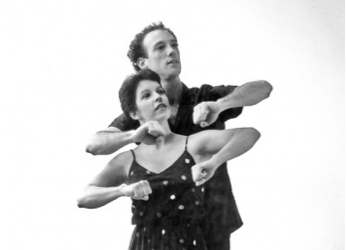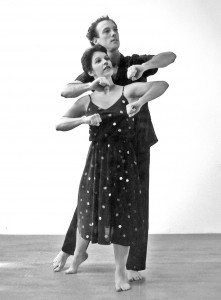
I have been a dancer all of my life – and have been a dance teacher for the past 30 of my 52 years. Over these years, my own body has changed and my needs and desires when I attend a dance class have changed. I have also found that my perspective as a teacher has changed, largely because of the range of experience I have had as a dance student. This has led me to explore different ideas in teaching. These explorations often generate more questions than answers – and propel me into new territory that keeps my life as a teacher very exciting. I have recently focused on encouraging students to pay attention to the sensation of the action that is a consequence of their intended movement.
The nervous system in our bodies has sensory and motor nerves. The sensory nerves bring information from our bodies to our brains – they let us know what is happening as it is happening. (I am not referring to the sensation of aches and pains that may come long after dancing. I am talking about the information that you have available DURING the movement process.) The motor nerves send signals to our bodies to take action – they tell a body part to move here or there. So often in my early dance training, the largest focus of my thinking was on these motor nerves. I would tell my body to do this and that – and for the most part, it would do what I asked. Luckily, I was young and I could do this with little negative consequences.
Over the years, however, my body started to complain. The sensory nerves started to pipe up and give me information about the consequences of my motor-focused approach. Initially, I would listen to by body long after the completion of the movement. It might be the following day that I would notice an ache or discomfort. Perhaps a few hours after cooling down I would sense that something was less than ideal. I came to see that I needed to reevaluate some of the ideas that I held to be true about how I danced. I needed to learn to pay more attention to this sensory information at the time I was moving so I could learn what needed to change and make new choices accordingly.
Now when I dance I try to leave both channels of communication open. I ask my body to perform a task, (for example: lift the right leg to the back) and I look to sense what my body does with that idea. How does the lifting of the leg affect the balance of my whole body? How does my torso want to shift to counterbalance the leg action? At what point has my leg gone high enough that I can stop lifting? How does the lift this time feel different from the previous time? Although it is taking lots of time to write about this process, the time it takes to gather the information – to sense and respond – is very quick! It’s a choice that can be made and an option that is always open.
As a teacher, I wondered how I could teach students the skills to do this for themselves. Teaching movement phrases is relatively simple; teaching students how to tune into their bodies, to sense and guide themselves while learning movement phrases – is a different thing. I needed students to focus on pleasing themselves – and not trying to please me. The focus of the class had to be student-centered, not teacher-driven. Primary importance had to be given to students following their own signals – even if it meant that they were not doing the same thing as the rest of the class.
One way I found to move in this direction was to teach phrases on the floor. When there is more contact between the body and the floor, there is more sensation. The sensory nerves are stimulated and provide lots of information about what the body is doing. The floor starts providing the feedback and teaching the student – even without the teacher’s watchful eye.
In creating classes that might be used to develop professional dancers, it seems two forces are at work. One the one hand, a student needs to develop coordination, master technique, and increase strength to offer prospective employers. On the other hand, to maintain a career as a dancer, it is important to learn great sensitivity to maintain physical health and achieve personal satisfaction in this extremely taxing profession.
 Helen Rea was first influenced by her mother, who performed with Hanya Holm and Martha Graham. Ms. Rea performed for 8 years with Liz Lerman Dance Exchange and co-directed Duets, etc., a modern dance repertory company. She was greatly influenced by the Bartenieff Fundamentals, her training as a certified teacher of The Alexander Technique, and her 20+ years of study in Biodynamic Craniosacral Therapy. She currently teaches dance classes at CityDance Center at Strathmore Music Center. She offers her own “Movement Improvement: Stretch and Integrate” classes and maintains a private practice in her studio in downtown Silver Spring, Maryland.
Helen Rea was first influenced by her mother, who performed with Hanya Holm and Martha Graham. Ms. Rea performed for 8 years with Liz Lerman Dance Exchange and co-directed Duets, etc., a modern dance repertory company. She was greatly influenced by the Bartenieff Fundamentals, her training as a certified teacher of The Alexander Technique, and her 20+ years of study in Biodynamic Craniosacral Therapy. She currently teaches dance classes at CityDance Center at Strathmore Music Center. She offers her own “Movement Improvement: Stretch and Integrate” classes and maintains a private practice in her studio in downtown Silver Spring, Maryland.